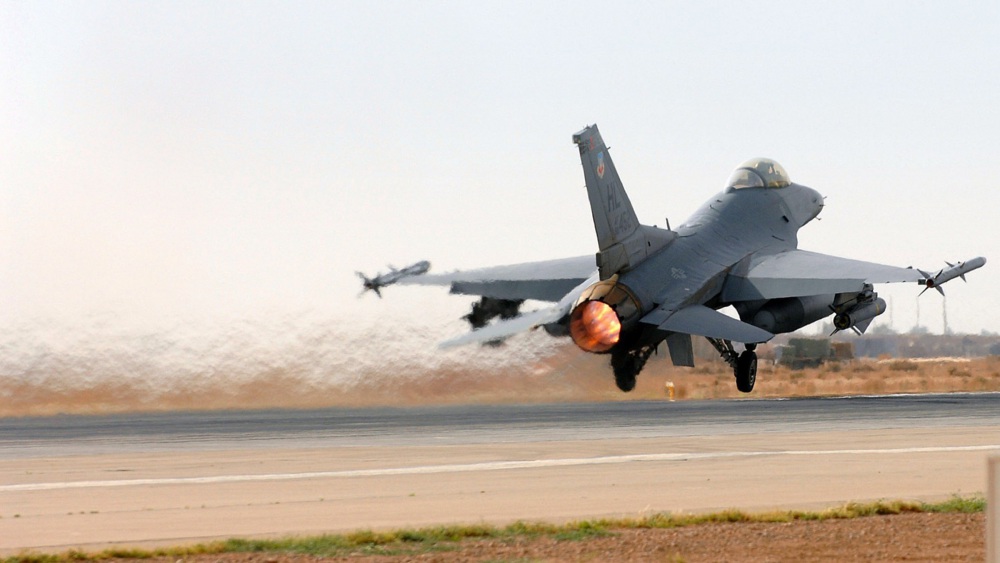
Brian Rose
Program Officer, Global Nuclear Policy
MUNICH – The Nuclear Threat Initiative (NTI) today released “Building a Safe, Secure, and Credible NATO Nuclear Posture,” a report addressing the security risks, credibility, and financial and political costs of maintaining NATO’s current nuclear posture, including forward-deployed U.S. nuclear weapons in Europe.
The report urges U.S. and NATO leaders to re-evaluate whether storing nuclear weapons at multiple sites across multiple countries makes sense in light of today’s threats and escalating costs—and, importantly, whether the weapons are still required elements of NATO defense policy.
“NATO’s security requires a hard look at and new approaches to NATO deterrence and defense through the prism of reducing the risk of nuclear use,” NTI CEO and Co-Chair Ernest J. Moniz and Co-Chair Sam Nunn write in the report. “Forward-deployed U.S. nuclear weapons in Europe increase the risk of accidents, blunders, or catastrophic terrorism and invite pre-emption. Given these added risks, it is past time to revisit whether these forward-based weapons are essential for military deterrence and political reassurance.”
| DOWNLOAD THE FULL REPORT | CLICK HERE |
Report co-authors Steve Andreasen, Isabelle Williams, and Brian Rose of NTI address the significant security risks around U.S. nuclear weapons stored in Europe amid an increase in terrorist attacks and political instability. They also explore whether a NATO nuclear posture developed in a different era remains credible at a time when the United States has a robust strategic nuclear deterrent that can be employed anywhere in the world.
“The foundation for NATO’s current nuclear posture was laid during the Cold War … to underscore the political solidarity between the United States and Europe and to provide a military capability to deter and, if necessary, defeat the numerically superior Soviet and Warsaw Pact armies,” they write, noting that the weapons today have little military utility and that alliance conventional forces as well as the strategic nuclear forces of the three nuclear NATO members are more than adequate for NATO’s deterrence and defense needs.
In chapters highlighting the escalating costs for the United States and European countries, experts Hans M. Kristensen of the Federation of American Scientists and Simon Lunn of the European Leadership Network detail plans to upgrade and replace bombs and the dual-capable aircraft needed to deploy them and explain NATO nuclear-sharing arrangement and procedures.
The report, which will be distributed at the Munich Security Conference, is available for download here.
About the Nuclear Threat Initiative
The Nuclear Threat Initiative works to protect our lives, environment, and quality of life now and for future generations. We work to prevent catastrophic attacks with weapons of mass destruction and disruption (WMDD)—nuclear, biological, radiological, chemical, and cyber. Founded in 2001 by former U.S. Senator Sam Nunn and philanthropist Ted Turner who continue to serve as co-chairs, NTI is guided by a prestigious, international board of directors. Ernest J. Moniz serves as chief executive officer and co-chair; Des Browne is vice chair; and Joan Rohlfing serves as president.
Sign up for our newsletter to get the latest on nuclear and biological threats.
The DoD’s new CWMD strategy, last updated in 2014, comes at a time when longstanding norms against nuclear use are being tested.
The paper highlights the need for renewed attention to the catastrophic effects of nuclear conflict as a crucial step toward reducing the risk of nuclear use.
A new report from NTI highlights the critical need for a global diplomatic approach to address growing cyber risks, including, where possible, through cooperation between the United States and Russia.



